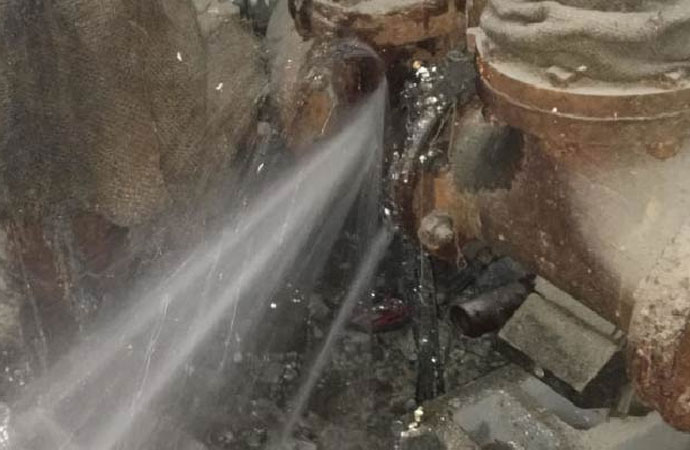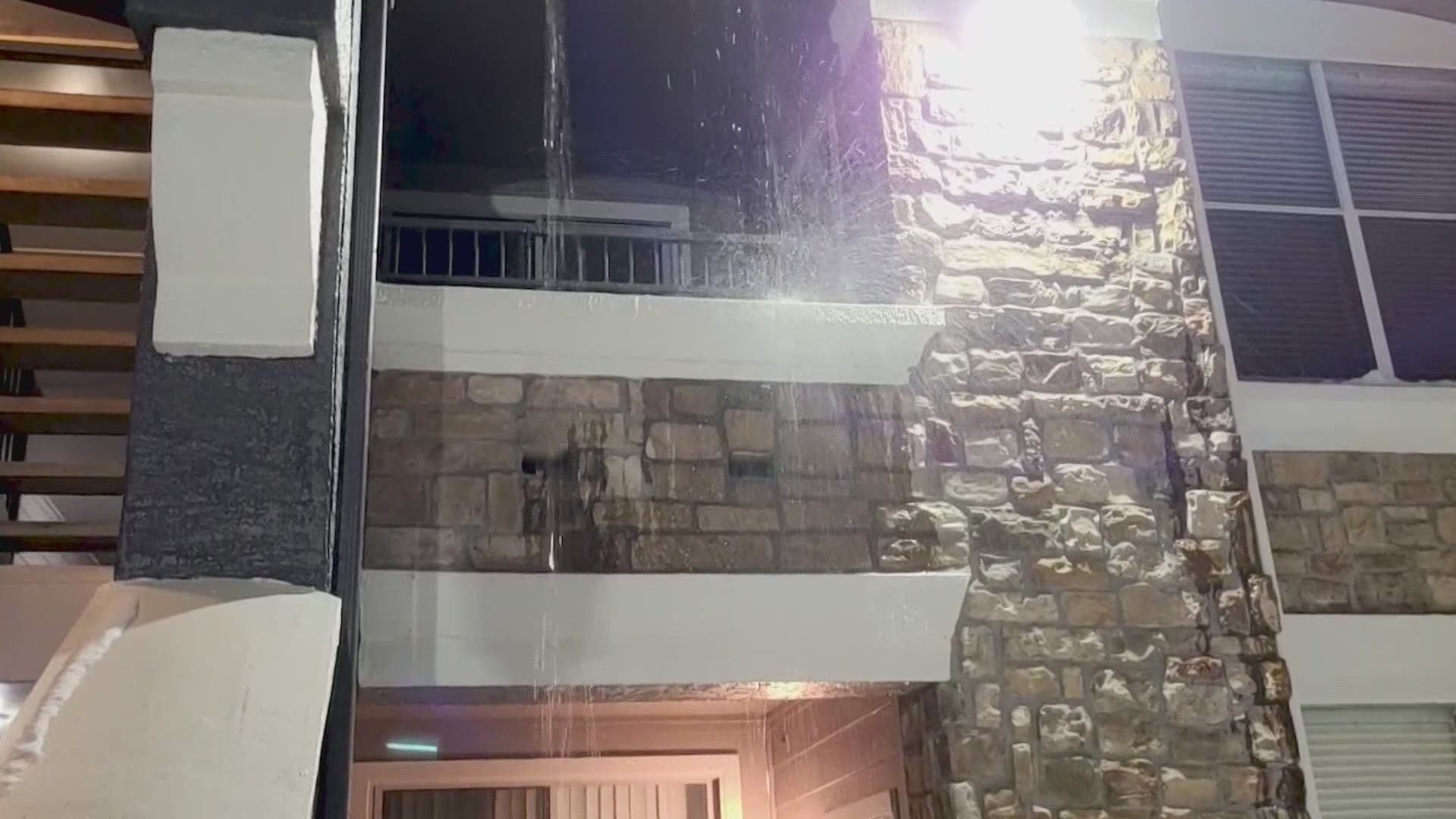From Detection to Correction: A Fast Approach to Handling Burst Pipes
From Detection to Correction: A Fast Approach to Handling Burst Pipes
Blog Article
The author is making a number of good points related to How to Install and Connect a New Dishwasher in general in this post which follows.

A ruptured pipeline is a significant emergency; you can just stand as you see water you pay dearly to reunite with the earth. In worse situations, you observe a pool on your kitchen area flooring, which is a wonderful journey threat, especially if you have children around. If the pipe that burst was in your walls, bad news: you may need to repaint that whole area.
Just how can a calamity like a ruptured pipeline be prevented and taken care of? Well, by paying attention to your specialist emergency plumbing professionals and also adhering to these regulations.
Just how do I recognize when my pipelines have burst?
Varying water pressures
Pipes do not simply burst in a day. You might have seen that your kitchen area tap or shower doesn't run instantly when you turn the faucet. It might stop for a couple of seconds and then blast you with more force than common.
In various other circumstances, the water may seem regular in the beginning, then decrease in stress after a couple of secs.
Wet walls and also water discolorations
Prior to a pipe bursts, it will certainly leakage, a lot of times. If this persistent dripping goes undetected, the leak may finish right into a broad gouge in your pipe. One very easy method to avoid this emergency is to look out for damp walls ad water discolorations. These water spots will lead you right to the leakage.
Puddles under pipelines and sinks
When a pipeline ruptureds, the outflow forms a pool. It may appear that the pool is growing in dimension, as well as regardless of how many times you wipe the puddle, in a couple of mins, there's another one waiting to be cleansed. Commonly, you may not have the ability to map the pool to any type of noticeable pipelines. This is a sign to call a specialist plumber.
Untraceable leaking noises
Pipeline bursts can take place in the most undesirable locations, like within concrete, inside wall surfaces, or under sinks. When the house goes quiet, you might be able to listen to an aggravatingly consistent dripping sound. Even after you've examined your shower head as well as kitchen faucet, the dripping might continue.
Dear viewers, the leaking might be originating from a pipe inside your wall surfaces. There isn't much you can do regarding that, other than tell an expert plumber.
Shut down the Water
When water freezes, it broadens in quantity by regarding 9 percent. And also it expands with significant pressure: The pressure inside pipelines might go from 40 pounds per square inch to 40,000 psi! No pipeline can hold that much pressure, so it breaks open. The break might occur where the ice kinds, but more frequently, it takes place where water pressure locates a weak spot in the pipe. That might be inches or even feet from the icy location. Find the water shutoff valve as well as switch off the water to avoid even more damage. You may additionally need to turn off the power as well, depending upon where the leakages takes place and exactly how large it is.
Contaminated water
Lots of people assume a ruptured pipeline is a one-way outlet. Rather the contrary. As water drains of the hole or wound in your plumbing system, contaminants discover their method.
Your water might be contaminated from the source, so if you can, inspect if your water container has any problems. Nevertheless, if your alcohol consumption water is provided and purified by the local government, you need to call your plumber immediately if you see or smell anything funny in your water.
What do I do when I find a burst pipe?
Your water meter will continue to run also while your water wastes. To decrease your losses, locate the main controls and turn the supply off. The water mains are an above-ground framework beside your building.
How to Fix & Detect a Leaking Pipe
How Do I Know if a Pipe is Leaking?
Leak detection tests can help you determine if your pipe has a leak. Even if you don’t see an apparent leak, you should still conduct leak detection tests regularly to save water and money—and prevent major damage to your home.
Water meter. It can be helpful to figure out what your usual water meter usage numbers are and then monitor them regularly. To monitor your meter, first, turn off all water faucets in your home. Check the meter and write down the numbers. In a few hours, check the meter again. If the numbers have changed, you have a leak. Water gauge. Use a water gauge to test your water pressure. Your showerhead should produce a certain amount of water pressure based on its model and design. If the pressure is lower than it is supposed to be for that specific showerhead, your home likely has a leak. Puddles. Look inside your bathroom, laundry, and kitchen sink cabinets. Puddles around the cabinets or around toilets, tubs, showers, and washing machines indicate the presence of a leaking pipe. You may also notice loose tiles, peeling or flaking paint, or mold caused by water accumulation. Napkin test. Even if you don’t see any puddles, you may still have a leak. You can test for water leaks in the bathroom, laundry, and kitchen by wiping below-sink connections with a napkin, paper towel, or piece of toilet paper. If it becomes damp, you probably have a leaking pipe under the sink. Discolored walls. Walls that are discolored—usually with brown or yellow stains—or bulging might mean that they have been impacted by water damage caused by a leaking pipe. Smell. A leaky pipe will create sitting water, and over time, that water may develop a musty smell. If your home smells musty, but you can’t locate the source, it may be due to a leak. Steps for Fixing a Leaking Pipe
A leaky drain can be remedied by tightening the pipe base, replacing the drain seal, caulking the rim, and tightening the pipe nut. Similarly, a leaking toilet pipe can be treated by tightening the packing nut. You may also need to replace the valve. A leaky faucet may just need tightening or replacement of the washers. If that doesn’t work, consider replacing your faucet. If your pipe has a hole in it, you may want to use a pipe leak sealer or pipe leak tape. This quick fix for water pipe leaks can also temporarily fix a copper pipe leak. https://www.ahs.com/home-matters/quick-tips/how-to-tell-if-pipes-are-leaking/

I was made aware of that article on What to Know Before Installing a Dishwasher through a friend on another blog. Enjoyed reading our article? Please share it. Let other people discover it. Bless you for your time. Don't hesitate to visit our website back soon.
Click For More Information
Report this page